As the obesity epidemic rages on with no end in sight, it’s forced many concerned dieters to take a step back and ask a simple question:
“Why am I always so hungry?”
As is often the case with broad questions, there are numerous valid answers with merit and application. The most compelling answers to this question, specifically, generally revolve around the following topics:

Chromax chromium picolinate works in multiple ways to help regulate appetite, and the science is covered in this article below!
- Malnourishment and lack of nutrition, even in the face of overabundant calories and obesity
- “Anti-nutrition”: foods and diets that actually negate nutrient uptake and make you more hungry
- Insulin resistance, often caused by the above two points
- Emotional or stress-induced eating
Today, we discuss a potential solution that links most of these points in the form of a critically essential mineral: chromium.
Chromium picolinate for appetite control: going beyond insulin signaling
We’ve covered Nutrition21’s Chromax brand of chromium picolinate in the past, focusing on its ability to combat insulin resistance. But today we dive deeper into chromium’s connection to appetite.
Beyond two studies showing that chromium picolinate can help with appetite control, we explore potential underlying mechanisms, detailing the mood-based results that led to the direct research. Also, we discuss two dietary supplements containing high doses of Chromax, developed by Nutrition21 (the sponsor of this article), that are marketed for appetite control.
It’s all below, but first, be sure to sign up for our Nutrition21 news alerts, since we’re consistently covering new research on their science-backed ingredients:
Subscribe to PricePlow's Newsletter and Alerts on These Topics
This area is reserved for Team PricePlow's upcoming Ingredients video.
Subscribe to our channel and sign up for notifications so you catch it when it goes live!
A brief primer on chromium and its mechanisms of action
Chromium is an essential mineral nutrient that, when ingested via diet or supplementation, has profound effects primarily dealing with insulin action.[1-4] The science is covered in great depth in our article, Chromium Picolinate: The Ultimate Trace Mineral for Insulin Sensitivity, but in today’s post, we’re more interested in the chromium-appetite connection.
Insulin, appetite, and nutrient absorption
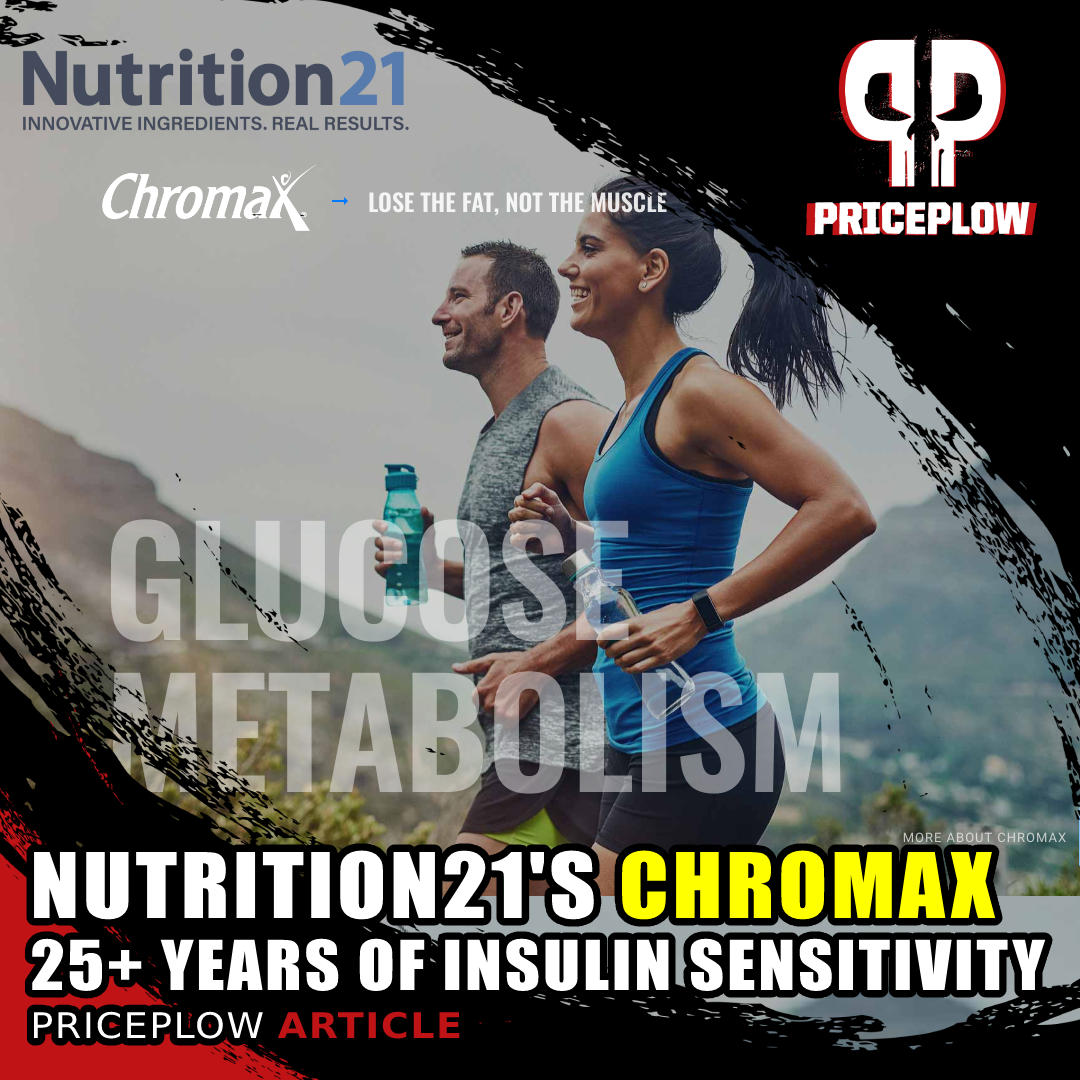
For more than 25 years, Chromax chromium picolinate has been improving insulin sensitivity. We argue that it’s only gotten better as an ingredient, as our diets have gotten worse over this time period.
On top of its job as a nutrient-storage hormone, insulin acts as a neuropeptide that’s heavily involved in satiety and appetite regulation.[5-7] It’s well known in diet communities that insulin-resistant individuals suffer from a greater, harder-to-satiate appetite in general.[5,8,9] There are numerous theories exploring why that’s the case, but we’re always quick to point out that someone can be nutrient-deficient and malnourished — even when overweight![10-12]
Since chromium supplementation has consistently demonstrated an ability to successfully combat insulin resistance,[13-16] one could posit that chromium’s assistance in insulin action allows the body to more effectively absorb nutrients, which helps decrease appetite. While that’s very likely to be a major mechanism, it’s not actually how researchers came to discover that properly-dosed chromium supplements are able to reduce appetite.
Rather, researchers discovered that there’s a mood component as well:
Chromium and mood
Throughout the 1990s, several observational research studies confirmed what many already intuitively believed: there’s a strong link between mood and appetite.[17] Soon after, in additional research published in 1999 and 2000, Malcolm McLeod and his team discovered the mood-enhancing effects of chromium picolinate supplementation![18,19] In those trials and case studies, dosages ranged from 400 micrograms to 600 micrograms of chromium picolinate per day.
5HT2A downregulation
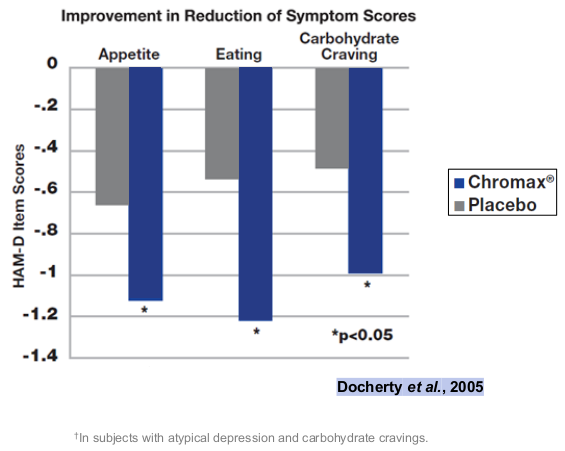
As we’ll see in the research detailed below, chromium picolinate has been shown to reduce carbohydrate cravings![25]
Follow-up placebo-controlled research published in 2003 confirmed results (using 600 micrograms of chromium picolinate for eight weeks),[20] and suggested a mechanism outside of increased insulin sensitivity and nutrient absorption: 5HT2A downregulation. In this publication, researchers cited a study from the previous year concluding that “chromium can modify brain 5-HT [serotonin] function in humans and animals, perhaps by altering the sensitivity of central 5-HT(2A) receptors”.[21]
Better serotonin utilization!
5-HT is short for 5-hydroxytryptamine, also known as serotonin — the critically important neurotransmitter known for modulating mood, cognition, memory, and various other biological processes.[22] The 5HT2A receptor is relevant because it’s a serotonin receptor that may be overabundant in subjects with poor mood states,[23] throwing serotonin levels out of equilibrium when it’s over-expressed. However, the study published in 2002, which was performed on animals, demonstrated that chromium supplementation increased tryptophan availability and increased brain serotonin content,[21] a strong mechanism to keep levels better regulated.
This research confirmed what was postulated earlier in the 1990s — that chromium strongly impacts the production and effects of both brain noradrenaline and serotonin function.[24] It’s likely that these outcomes are still related to insulin signaling — improved insulin performance (thanks to chromium) should increase the amount of tryptophan that enters the brain. It allows for more serotonin production and decreases competition for other large neural amino acids (NAAs).[21]
Chromium, insulin, mood, and appetite: coming full circle
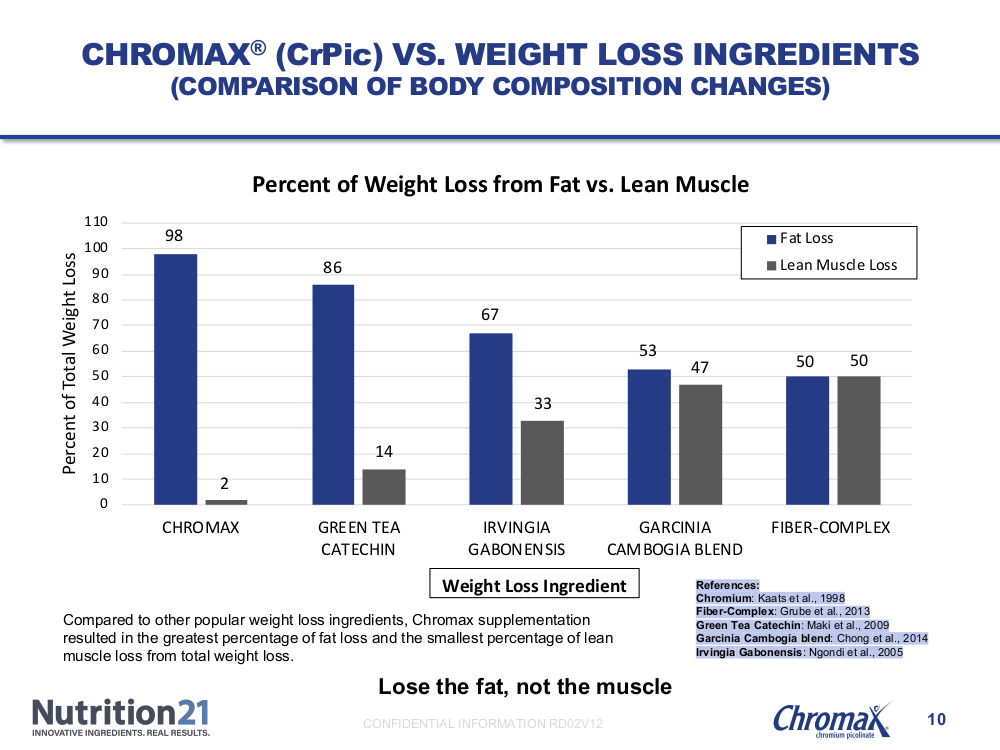
Compared to other popular stimulant-free weight loss ingredients, Chromax seems to outperform them all! Image courtesy Nutrition21.
The theory comes full circle: better insulin action allows for better nutritional uptake, which includes improved tryptophan and neurotransmitter production. Chromium theoretically works in two major, yet related, ways:
- With better overall nutritional absorption, satiety is more easily achieved; and
- With better nutritional uptake, better mood can be achieved — and with that comes less appetite abnormalities.
A hint of appetite control from mood studies…
Getting back to the 2003 follow-up study where 600 micrograms of chromium improved mood, the researchers noted the following:
“Overeating and fatigue were significant problems in this sample at study entry. Of the eight CP patients who were overeating at baseline, four experienced complete disappearance of the symptom, as compared to one of the five on PBO (Placebo). In five cases, there was at least a 50% improvement by week 2.”[20]
When researchers note things like this, it generally means more research is needed and will be coming from them or another team of scientists…
So with the additional mechanisms understood, the success in trials studying mood — and some case studies demonstrating improved eating habits — researchers decided it was time to officially test chromium supplementation against satiety and appetite:
Chromium Picolinate for Appetite Regulation
This brings us to the two studies that looked at chromium picolinate’s direct effects on appetite.[25,26]
Studies show that Chromax is effective at reducing appetite, which helps promote weight loss. Image courtesy of Nutrition21.
The first, published in 2005, studied 113 mood disordered adults for eight weeks.[25] The researcher’s primary interest, on top of mood, was to analyze carbohydrate cravings. They gave subjects either placebo or 600 micrograms of chromium from chromium picolinate.
The results were impressive: they not only showed mood improvements in the chromium group, but saw better appetite overall for those who had been under-eating and reduced carbohydrate cravings from those who had been eating carbs uncontrollably.[25] In fact, 80% of those with high-carb cravings responded to chromium picolinate!
-
The second study, published in 2008, recruited 42 overweight adult women with carbohydrate cravings. They were assigned to either the placebo or chromium picolinate group. The chromium group received 1000 micrograms daily for eight weeks. The researchers monitored food intake and calories.[26]
The results went incredibly well — the chromium picolinate resulted in reduced food intake, but did not lead to increased hunger! This is in total contrast to the placebo group. Those volunteers did not experience decreased food intake and they reported increased hunger. Interestingly, the chromium group had significantly reduced cravings for high-fat foods this time around.[26]
The chromium picolinate group also lost a small amount of weight (a bit over a pound) while the placebo group gained just over a pound — modest yet respectable success in line with what we generally see from other chromium picolinate research studies.
In addition, the researchers also tested chromium picolinate on rats, with the highest-dose group also decreasing food intake.[26]
With these two studies in mind, as well as some of the case studies in the mood studies above, we’re confident that 600 to 1000 micrograms of chromium picolinate taken daily will help with appetite control, especially for those facing challenges with carbohydrates.
Chromax Chromium Picolinate from Nutrition21
Chromax is the branded chromium picolinate ingredient made by Nutrition21, the industry leader in chromium research and development, and sponsor of this article. We’ve seen Chromax used in several glucose-disposal agent supplements that are used to control blood sugars in dieters and help push carbohydrates into muscle tissue in athletes, and they’re linked at the bottom of our article, Chromax Chromium Picolinate: 25+ Years of Insulin Sensitivity Improvement.
There are a couple very popular Chromax-based supplements geared specifically toward appetite control that we haven’t covered yet:
Appetite control supplements utilizing Chromax chromium picolinate
-
HUM Nutrition Counter Cravings
HUM Nutrition’s Counter Cravings supplement sports 500 micrograms of chromium from Chromax Chromium Picolinate, which means you’ll need two capsules per day to get into the research-backed doses discussed above.
However, alongside Chromax, there are three additional well-disclosed ingredients that make a lot of sense in a weight loss aid:
-
Coleus forskohlii extract, standardized for 10% forskolin – 250 mg
HUM Nutrition’s Counter Cravings contains 500 micrograms of chromium from Chromax chromium picolinate alongside a few other well-dosed and research-backed ingredients
Coleus forskohlii is a member of the mint family. The plant is often used for its forskolin content, which has the ability to boost cellular energy by stimulating cAMP and increasing fat oxidation.[27] When used in a hypocaloric diet, subjects taking forskolin had better body-fat measurements, lipid profiles, and improved insulin sensitivity, compared to placebo.[28]
A study measuring the same dosage and standardization showed reduced appetite and hunger from Coleus forskohlii.[29] Reduced appetite has also been shown in animal models.[30]
-
L-theanine – 200 mg
L-theanine, an ingredient commonly found in tea leaves, works as a neurotransmitter.[31] While it’s not a sedative, it is known for increasing feelings of relaxation.[32] We often write about how its effects are synergistic with caffeine[33] (when taken together, it helps take the “edge” off of caffeine and increases focus). So this could be good for coffee drinkers (keep it black or maybe add some MCT to keep appetite down) and anyone on a stimulant-based fat burner.
This is a quality dose for relaxation, and while we’re not sure of any specific appetite suppression research, it makes sense to calm those who are “nervous eaters”.
-
Brown Seaweed (Laminaria japonica) standardized for 10% fucoxanthin – 15mg
Fucoxanthin comes from seaweed and boosts the metabolism of carbohydrates. It does this by increasing GLUT4 signaling in muscle tissue, which helps the body store glucose in muscle as opposed to fat.[34,35] It’s stimulant-free but, similar to other stimulants, has some fat-burning mechanisms.[36,37]
More importantly for today’s article, animal research has shown that high-fucoxanthin-based seaweeds not only help prevent fat cell growth, but they also reduce hunger and increase satiety![38]
-
-
Olly Combat Cravings
Olly Combat Cravings comes in at an even higher-dosed 1000 micrograms of chromium, but a bit less in the way of supporting ingredients
Combat Cravings by Olly has the full 1000 microgram dose of chromium from Chromax in a single capsule, but a bit less in the way of its supporting ingredients.
You also get 50 milligrams each of green tea extract, goji berry juice powder, and ginger extract. These aren’t very large doses compared to other supplements. We often see ginger for its anti-nausea benefits, since it can speed the gastric transit of foods.[39] However, we’re not sure if this is a large enough ginger dose to establish that effect.
This is the one to try if you want to primarily feel the effects of high-dosed Chromax in just one capsule, and it normally comes at a lower cost.
The above supplements take different approaches to fighting cravings, and thanks to the inclusion of Chromax at high doses, both have merit. Counter Cravings by HUM clearly has a more impressive, research-backed formula, but you’ll need to take two capsules to achieve the same outcome from one dose of chromium. Thankfully, HUM provides 60 capsules (as opposed to 30), which makes it easier on the budget.
Conclusion: Appetite suppression is multi-faceted
Chromium consumption ties together multiple biological systems that can ultimately result in healthier eating, better nutritional absorption, and improved mood. This is generally what happens when you can make yourself more insulin sensitive — the benefits go beyond simple metabolic health. By both improving mood and nutritional uptake, chromium supplementation can work in multiple, seemingly-different ways to achieve better satiety, more consistent eating, and ultimately, less hunger.
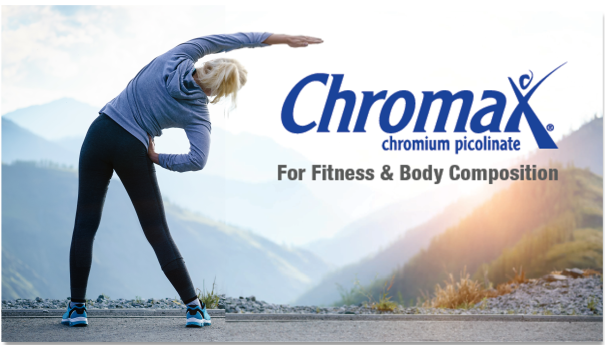
Chromax is the industry’s most trusted and tested form of chromium picolinate, helping users stay insulin sensitive for decades
It’s worth adding that we encourage dieters to uncover the root causes of their overeating issues, be it emotional or physiological. Above, we touch upon how obese individuals can still be (and often are) malnourished. Achieving satiety can be as simple as consuming a more nutrient-dense diet that’s high in protein[40] and low in “anti-nutrients” that can actually make you hungrier.
Processed foods are generally the villains of most unhealthy, over-caloric diets. For instance, eating sugar and empty carbs merely makes you crave more sugar,[41] while “vegetable oils” (seed oils) high in unstable omega-6 fatty acids can kick cravings into overdrive by activating the endocannabinoid system[42-45] — literally giving you the “munchies”.
The answer is to focus on whole foods, stable cooking fats, and eat high-protein,[40] high-nutrient foods before allowing for any treats. Unsurprisingly, we’ll also find more chromium in whole foods. But if you still want a helpful boost, Chromax is in the supplements above to drive a bit more chromium picolinate home.
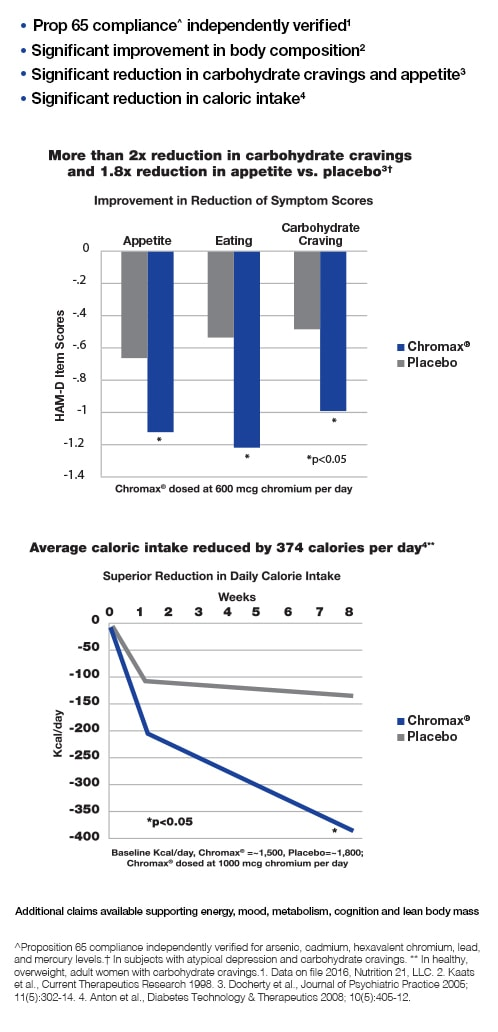
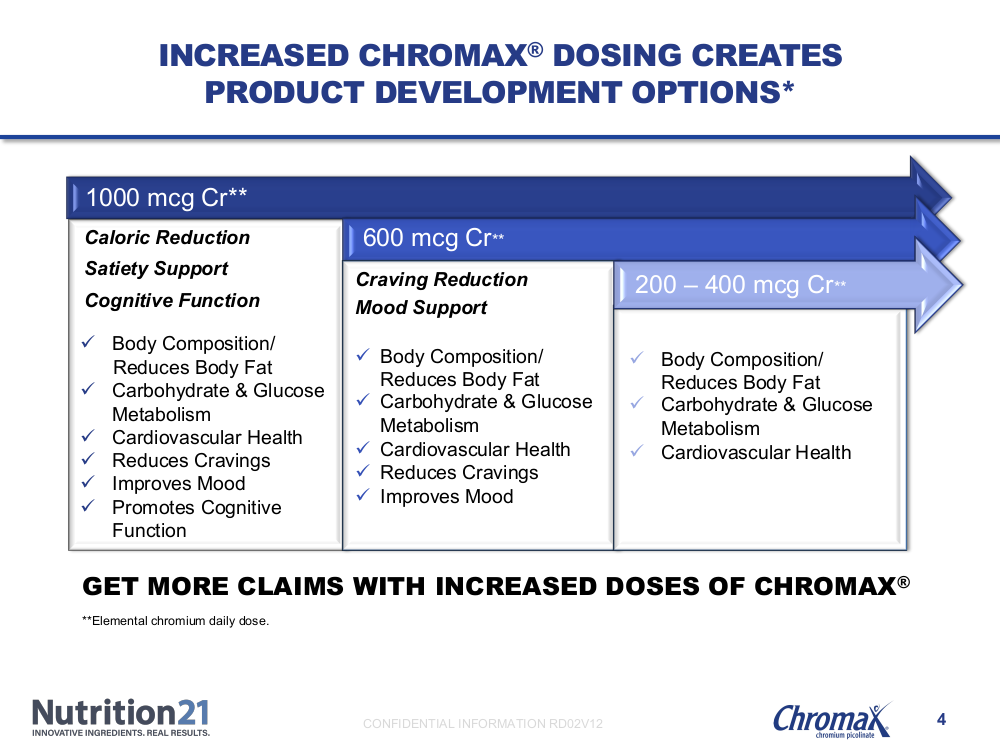
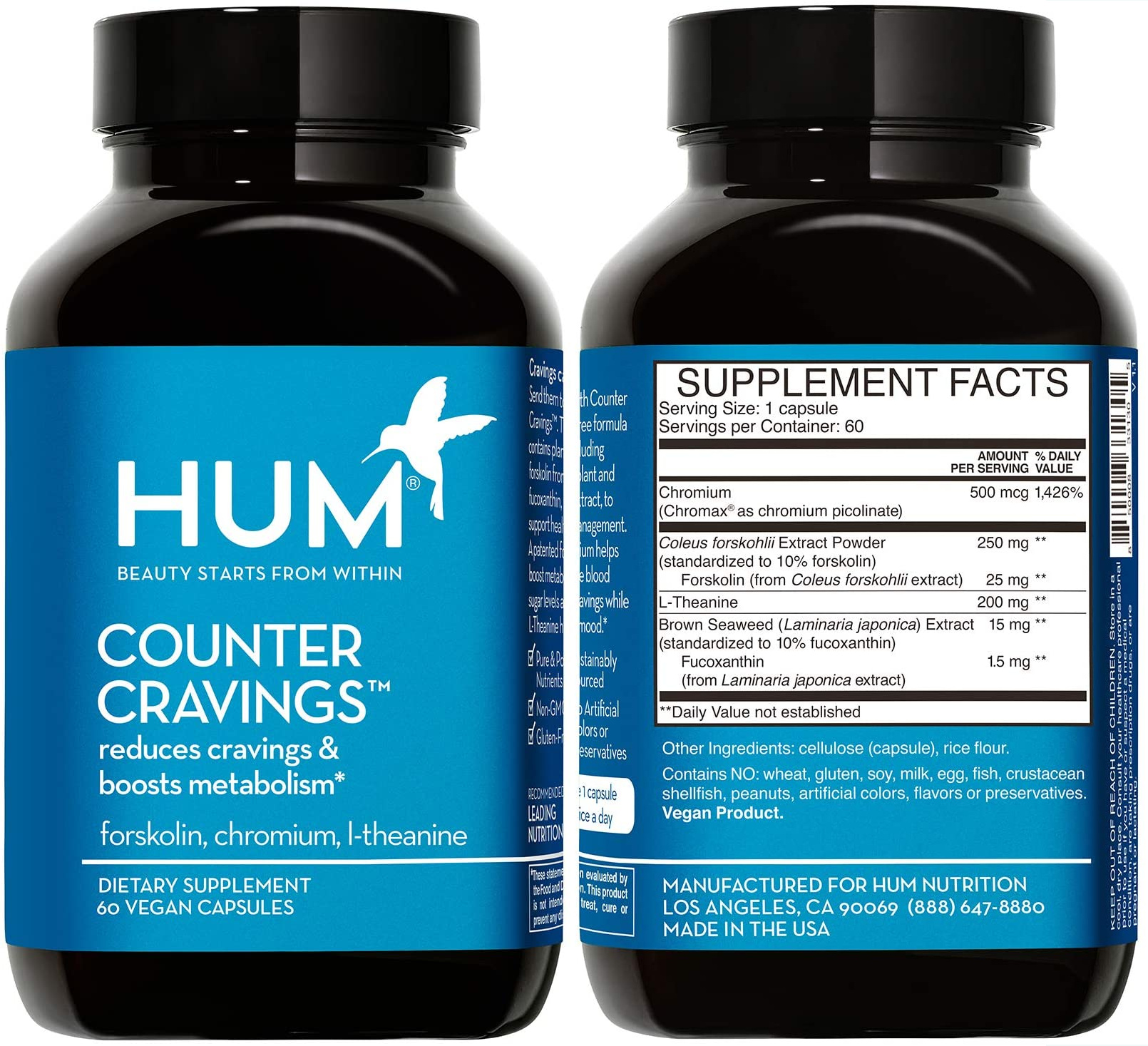






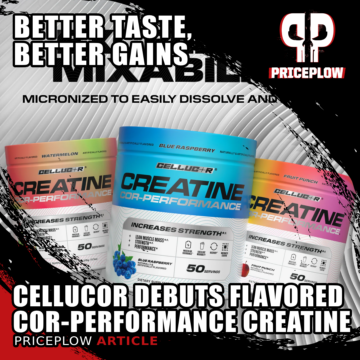
Comments and Discussion (Powered by the PricePlow Forum)